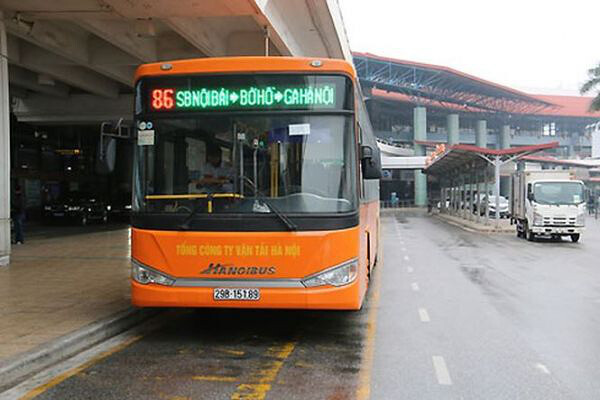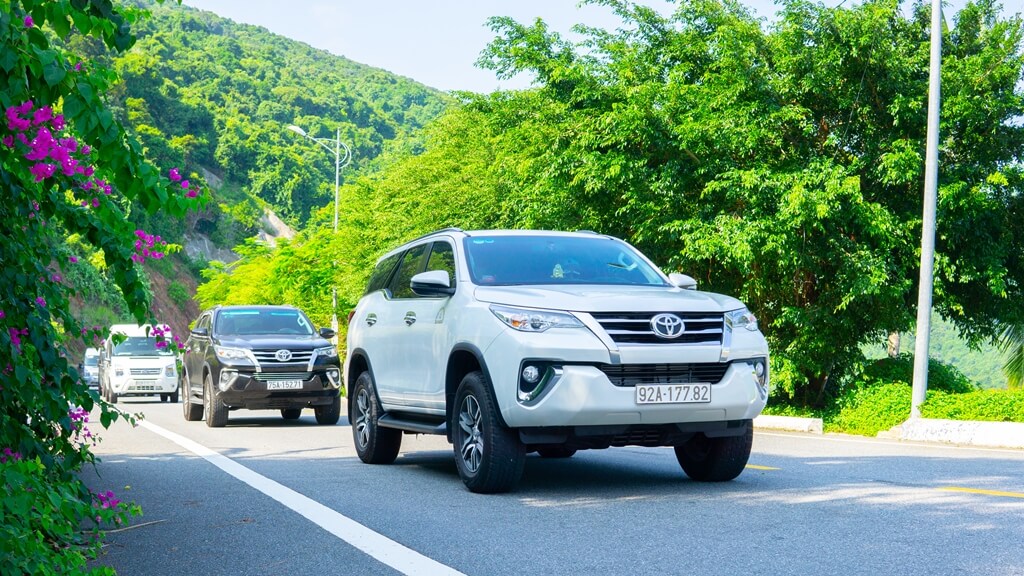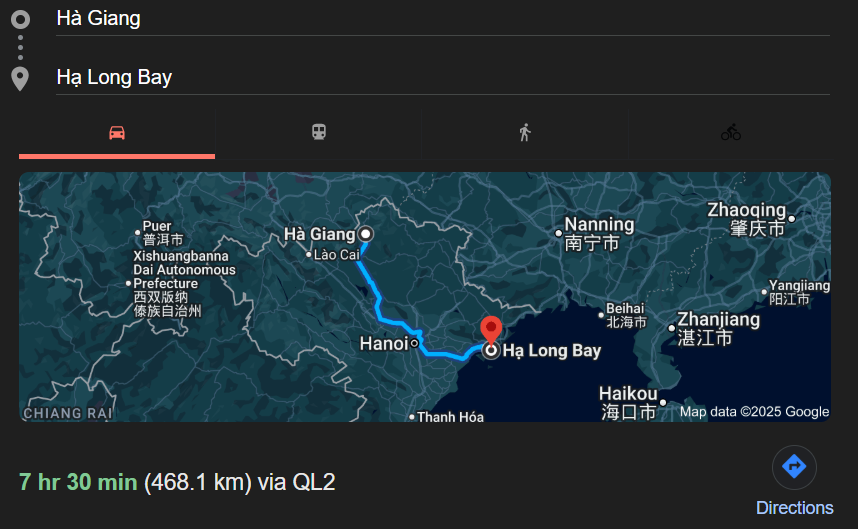Nestled high in northern Vietnam,
Ha Giang is a mesmerizing realm of towering limestone ridges, winding mountain passes, and vibrant ethnic cultures. In contrast,
Halong Bay‘s emerald waters and karst islets shimmer peacefully on the coast. This journey between these two destinations offers its own epic narrative, blending rugged highlands with serene seascapes. However, traveling from Ha Giang to Halong Bay can have many troubles due to the long distance and changing landscapes, especially if you are a foreigner. In this blog, let’s dive into the essentials you need for this journey – from roads and times to tips and comfort.
1. From Ha Giang to Halong Bay: An Overview
The overland journey from Ha Giang city to Halong Bay covers roughly
450-460 km on winding roads. In distance alone, it may look manageable, but mountainous terrain and curves usually turn it into a long-haul, so you can expect an
8 to 11-hour trip depending on traffic, stops, and your transport choice. Still, it is a great idea to have the fullest northern Vietnam experience by travelling from Ha Giang to Halong Bay.

Ha Giang, nestled on the Lo River and surrounded by rugged peaks in the far northern mountains of Vietnam, is a cultural crossroads with over 55,000 residents and 22 ethnic groups. The town marks the gateway to the legendary
Ha Giang Loop, known for dramatic mountain passes and ethnic minority villages. Life here unfolds slowly, with vibrant local markets, traditional stilt houses, and landscapes that shift between misty valleys and sharp limestone ridges. It’s a place where culture and scenery are deeply intertwined, making it one of Vietnam’s most enriching destinations.

When you travel from Ha Giang to Halong Bay, you’ll be greeted by one of the world’s most iconic seascapes: emerald waters studded with karst towers and a unique ecosystem. Located on Vietnam’s northeastern coast, Halong Bay is
UNESCO-listed for its geological significance and natural beauty. Thousands of limestone islands rise sharply from the sea, creating a dreamlike maze of cliffs, caves, and sheltered coves. It’s a striking contrast to Ha Giang’s mountains, but equally unforgettable in its atmosphere and allure.
2. All Ways to Transport from Ha Giang to Halong Bay
Direct Buses

Several bus operators like New Way, Daiichi, Cuong Lan, Thuan Thuc, Duc Duong, and GroupTour offer
direct trips covering the full route in about
8 to 11 hours, with prices ranging from
300,000 to 680,000 VND ($13-32) from Ha Giang to Halong Bay. These coaches – either seated or sleeper-style – typically include AC, WiFi, and hotel pick-up/drop-off services. While cost-effective and stress-free in terms of planning, be prepared for a long ride with limited mobility and occasional delays. Still, if you’re traveling solo or as a couple on a budget, this can be the most straightforward option.
Bus via Hanoi (Break-Journey Option)

If you prefer shorter travel segments, consider breaking the journey in Hanoi: Ha Giang to Hanoi takes
6-8 hours by sleeper or day bus (around 300- 550k VND), then Hanoi to Halong is another
2.5-3 hours for about 230-460k VND. This gives you flexibility to rest, sightsee, or avoid overnight travel fatigue. You can even fly over from Hanoi to Halong Bay by seaplane in roughly
45-60 minutes (4-9 million VND), though that adds a scenic premium. Splitting the journey also lets you sample Hanoi’s charm and prepare for Halong’s coastal vibe at a healthier pace.
Private Car/Taxi/Minivan

Hiring a private car – sedan, SUV, or minivan – offers a comfortable
8-hour journey with full control over stops, departure times, and luggage from Ha Giang to Halong Bay. Prices usually range from
4.4 million VND for a sedan, up to about
5.9 million VND for a minivan, neutrally priced per vehicle. This is especially practical for groups or families who value privacy and flexibility. The tradeoff? It’s the most expensive option, so portfolios need to justify the cost.
Motorbikes

For the adventurous, riding a motorbike from Ha Giang to Halong Bay (or vice versa) spans the same 450-460 km and can take
8-11 hours, with a mix of mountainous winding roads and coastal highways. It’s incredibly scenic and freeing, but it carries high risk: tricky terrain, unpredictable weather, and strict legal rules. You’ll need a valid international motorcycle license or risk heavy fines and police checkpoints – plus, protective gear is essential. If you’re not experienced or up for endurance, hiring an experienced “easy rider” is a safer mid‑way choice.
>>>> Read More: Ha Giang Motorbike Rental: Everything You Need To Know
3. Tips for Traveling from Ha Giang to Halong Bay

Plan Ahead
Since buses and private transfers can fill quickly, especially during tourist seasons, it’s wise to book at least a few days in advance. If you’re sensitive to overnight travel on sleeper buses, consider the Hanoi break option. Most services can be booked via apps like Baolau, 12Go Asia, or directly through providers.
Motorbike Safety
If using a motorbike, ensure you carry a licensed IDP, helmet, and protective gear like jackets, gloves, and knee pads. Roads through passes like
Ma Pi Leng (1,150-1,500 m elevation) are breathtaking but demanding and sometimes dangerous. Many travelers recommend hiring an easy rider to share navigation duties and minimize legal issues.
>>> Explore More: How To Get A Valid International Driving Permit In Vietnam: A Full Guide For Foreigners
Time of Year & Weather
Best viewing months in Ha Giang are
September to December, when rice terraces are golden and buckwheat flowers bloom, though nights in the north can be cold. March and April are also ideal since it is cherry blossom season in Ha Giang. Monsoon season (June-September) often brings heavy rain, especially into the highlands, making travel slower and more hazardous. Always check regional weather conditions and road advisories before departure.
On the other hand, Halong Bay is most pleasant from October to April, with drier skies and calm seas – ideal for cruising and
kayaking. Therefore, the ideal time to travel from Ha Giang to Halong Bay will be from October to March, and always check regional weather updates and road conditions before departure to make the most of both destinations on your journey.
Comfort & Safety
Stock up on water and snacks before leaving remote areas, since certain sections from Ha Giang to Halong Bay have limited shops. Dress in layers – bus air-conditioning can be chilly, and highland mornings brisk. On overnight buses, bring earplugs, an eye mask, and a travel pillow. For road travel, buckle up or ensure helmets are secure, and on motorbike trips, stay alert for trucks, blind turns, and local traffic.
Conclusion
The journey from Ha Giang to Halong Bay isn’t just a ride – it’s an unfolding narrative through landscapes, cultures, and contrasting worlds. For budget-conscious explorers, direct buses are the simplest. Comfort-focused travelers might opt for staged travel via Hanoi or a private car. And for thrill-seekers, the motorbike route, with its adventure and challenges, can be deeply rewarding.
YESD Travel is a social enterprise that specializes in responsible tourism in Vietnam. We offer authentic, culturally immersive, and sustainable tours that also give back to the local community of Ha Giang. Our tours are private, personal, and open for customization to your liking with local guides trained through our educational initiatives. If you’re heading from Ha Giang to Halong Bay, book a tour with us to experience its beauty in a responsible way, while supporting ethical travel and local livelihoods. Ha Giang, nestled on the Lo River and surrounded by rugged peaks in the far northern mountains of Vietnam, is a cultural crossroads with over 55,000 residents and 22 ethnic groups. The town marks the gateway to the legendary Ha Giang Loop, known for dramatic mountain passes and ethnic minority villages. Life here unfolds slowly, with vibrant local markets, traditional stilt houses, and landscapes that shift between misty valleys and sharp limestone ridges. It’s a place where culture and scenery are deeply intertwined, making it one of Vietnam’s most enriching destinations.
Ha Giang, nestled on the Lo River and surrounded by rugged peaks in the far northern mountains of Vietnam, is a cultural crossroads with over 55,000 residents and 22 ethnic groups. The town marks the gateway to the legendary Ha Giang Loop, known for dramatic mountain passes and ethnic minority villages. Life here unfolds slowly, with vibrant local markets, traditional stilt houses, and landscapes that shift between misty valleys and sharp limestone ridges. It’s a place where culture and scenery are deeply intertwined, making it one of Vietnam’s most enriching destinations. When you travel from Ha Giang to Halong Bay, you’ll be greeted by one of the world’s most iconic seascapes: emerald waters studded with karst towers and a unique ecosystem. Located on Vietnam’s northeastern coast, Halong Bay is UNESCO-listed for its geological significance and natural beauty. Thousands of limestone islands rise sharply from the sea, creating a dreamlike maze of cliffs, caves, and sheltered coves. It’s a striking contrast to Ha Giang’s mountains, but equally unforgettable in its atmosphere and allure.
When you travel from Ha Giang to Halong Bay, you’ll be greeted by one of the world’s most iconic seascapes: emerald waters studded with karst towers and a unique ecosystem. Located on Vietnam’s northeastern coast, Halong Bay is UNESCO-listed for its geological significance and natural beauty. Thousands of limestone islands rise sharply from the sea, creating a dreamlike maze of cliffs, caves, and sheltered coves. It’s a striking contrast to Ha Giang’s mountains, but equally unforgettable in its atmosphere and allure. Several bus operators like New Way, Daiichi, Cuong Lan, Thuan Thuc, Duc Duong, and GroupTour offer direct trips covering the full route in about 8 to 11 hours, with prices ranging from 300,000 to 680,000 VND ($13-32) from Ha Giang to Halong Bay. These coaches – either seated or sleeper-style – typically include AC, WiFi, and hotel pick-up/drop-off services. While cost-effective and stress-free in terms of planning, be prepared for a long ride with limited mobility and occasional delays. Still, if you’re traveling solo or as a couple on a budget, this can be the most straightforward option.
Several bus operators like New Way, Daiichi, Cuong Lan, Thuan Thuc, Duc Duong, and GroupTour offer direct trips covering the full route in about 8 to 11 hours, with prices ranging from 300,000 to 680,000 VND ($13-32) from Ha Giang to Halong Bay. These coaches – either seated or sleeper-style – typically include AC, WiFi, and hotel pick-up/drop-off services. While cost-effective and stress-free in terms of planning, be prepared for a long ride with limited mobility and occasional delays. Still, if you’re traveling solo or as a couple on a budget, this can be the most straightforward option. If you prefer shorter travel segments, consider breaking the journey in Hanoi: Ha Giang to Hanoi takes 6-8 hours by sleeper or day bus (around 300- 550k VND), then Hanoi to Halong is another 2.5-3 hours for about 230-460k VND. This gives you flexibility to rest, sightsee, or avoid overnight travel fatigue. You can even fly over from Hanoi to Halong Bay by seaplane in roughly 45-60 minutes (4-9 million VND), though that adds a scenic premium. Splitting the journey also lets you sample Hanoi’s charm and prepare for Halong’s coastal vibe at a healthier pace.
If you prefer shorter travel segments, consider breaking the journey in Hanoi: Ha Giang to Hanoi takes 6-8 hours by sleeper or day bus (around 300- 550k VND), then Hanoi to Halong is another 2.5-3 hours for about 230-460k VND. This gives you flexibility to rest, sightsee, or avoid overnight travel fatigue. You can even fly over from Hanoi to Halong Bay by seaplane in roughly 45-60 minutes (4-9 million VND), though that adds a scenic premium. Splitting the journey also lets you sample Hanoi’s charm and prepare for Halong’s coastal vibe at a healthier pace. Hiring a private car – sedan, SUV, or minivan – offers a comfortable 8-hour journey with full control over stops, departure times, and luggage from Ha Giang to Halong Bay. Prices usually range from 4.4 million VND for a sedan, up to about 5.9 million VND for a minivan, neutrally priced per vehicle. This is especially practical for groups or families who value privacy and flexibility. The tradeoff? It’s the most expensive option, so portfolios need to justify the cost.
Hiring a private car – sedan, SUV, or minivan – offers a comfortable 8-hour journey with full control over stops, departure times, and luggage from Ha Giang to Halong Bay. Prices usually range from 4.4 million VND for a sedan, up to about 5.9 million VND for a minivan, neutrally priced per vehicle. This is especially practical for groups or families who value privacy and flexibility. The tradeoff? It’s the most expensive option, so portfolios need to justify the cost. For the adventurous, riding a motorbike from Ha Giang to Halong Bay (or vice versa) spans the same 450-460 km and can take 8-11 hours, with a mix of mountainous winding roads and coastal highways. It’s incredibly scenic and freeing, but it carries high risk: tricky terrain, unpredictable weather, and strict legal rules. You’ll need a valid international motorcycle license or risk heavy fines and police checkpoints – plus, protective gear is essential. If you’re not experienced or up for endurance, hiring an experienced “easy rider” is a safer mid‑way choice.>>>> Read More: Ha Giang Motorbike Rental: Everything You Need To Know
For the adventurous, riding a motorbike from Ha Giang to Halong Bay (or vice versa) spans the same 450-460 km and can take 8-11 hours, with a mix of mountainous winding roads and coastal highways. It’s incredibly scenic and freeing, but it carries high risk: tricky terrain, unpredictable weather, and strict legal rules. You’ll need a valid international motorcycle license or risk heavy fines and police checkpoints – plus, protective gear is essential. If you’re not experienced or up for endurance, hiring an experienced “easy rider” is a safer mid‑way choice.>>>> Read More: Ha Giang Motorbike Rental: Everything You Need To Know

